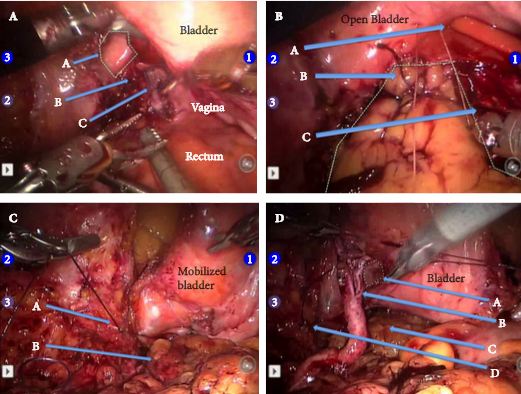Article of the Week: Robotic management of GU injuries from obstetrical and gynecological operations
Every week the Editor-in-Chief selects the Article of the Week from the current issue of BJUI. The abstract is reproduced below and you can click on the button to read the full article, which is freely available to all readers for at least 30 days from the time of this post.
In addition to the article itself, there is an accompanying editorial written by a prominent member of the urological community. This blog is intended to provoke comment and discussion and we invite you to use the comment tools at the bottom of each post to join the conversation.
Finally, the third post under the Article of the Week heading on the homepage will consist of additional material or media. This week we feature a video from Dr. Ronald Boris, discussing his paper.
If you only have time to read one article this week, it should be this one.
Robotic management of genito-urinary injuries from obstetrical and gynecological operations: a multi-institutional report of outcomes
Paul T. Gellhaus, Akshay Bhandari*, M. Francesca Monn, Thomas A. Gardner,Prashanth Kanagarajah*, Christopher E. Reilly†, Elton Llukani†, Ziho Lee†, Daniel D. Eun†,Hani Rashid‡, Jean V. Joseph‡, Ahmed E. Ghazi‡, Guan Wu‡and Ronald S. Boris
Department of Urology, Indiana University, Indianapolis, IN, *Division of Urology, Columbia University at Mount Sinai,Miami Beach, FL,†Department of Urology, Temple University, Philadelphia, PA, and‡Department of Urology, University ofRochester, Rochester, NY, USA
OBJECTIVE
To evaluate the utility of robotic repair of injuries to the ureter or bladder from obstetrical and gynaecological (OBGYN) surgery
PATIENTS AND METHODS
A retrospective review of all patients from four different high-volume institutions between 2002 and 2013 that had a robot-assisted (RA) repair by a urologist after an OBGYN genitourinary injury.
RESULTS
Of the 43 OBGYN operations, 34 were hysterectomies: 10 open, 10 RA, nine vaginally, and five pure laparoscopic. Nine patients had alternative OBGYN operations: three caesarean sections, three oophorectomies (one open, two laparoscopic), one RA colpopexy, one open pelvic cervical cerclage with mesh and one RA removal of an invasive endometrioma. In all, 49 genitourinary (GU) injuries were sustained: ureteric ligation (26), ureterovaginal fistula (10), ureterocutaneous fistula (one), vesicovaginal fistula (VVF; 10) and cystotomy alone (two). In all, 10 patients (23.3%) underwent immediate urological repair at the time of their OBGYN RA surgery. The mean (range) time between OBGYN injury and definitive delayed repair was 23.5 (1–297) months. Four patients had undergone prior failed repair: two open VVF repairs and two balloon ureteric dilatations with stent placement. In all, 22 ureteric re-implants (11 with ipsilateral psoas hitch) and 15 uretero-ureterostomies were performed. Stents were placed in all ureteric cases for a mean (range) of 32 (1–63) days. In all, 10 VVF repairs and two primary cystotomy closures were performed. Drains were placed in 28 cases (57.1%) for a mean (range) of 4.1 (1–26) days. No case required open conversion. Two patients (4.1%) developed ureteric obstruction after RA repair requiring dilatation and stenting. The mean (range) follow-up of the entire cohort was 16.6 (1–63) months.
CONCLUSIONS
RA repair of GU injuries during OBGYN surgery is associated with good outcomes, appears safe and feasible, and can be used successfully immediately after injury recognition or as a salvage procedure after prior attempted repair. RA techniques may improve convalescence in a patient population where quick recovery is paramount.


